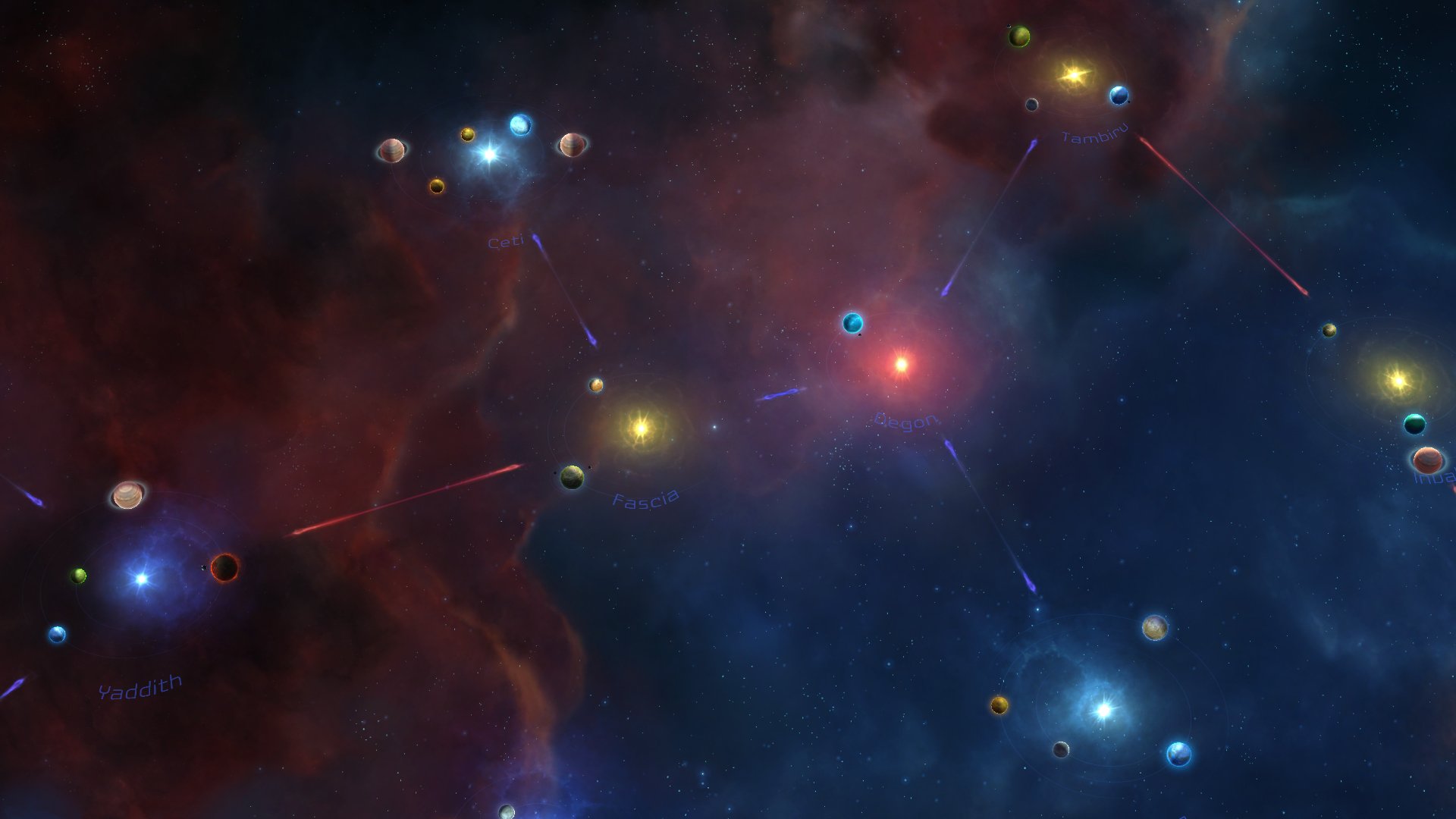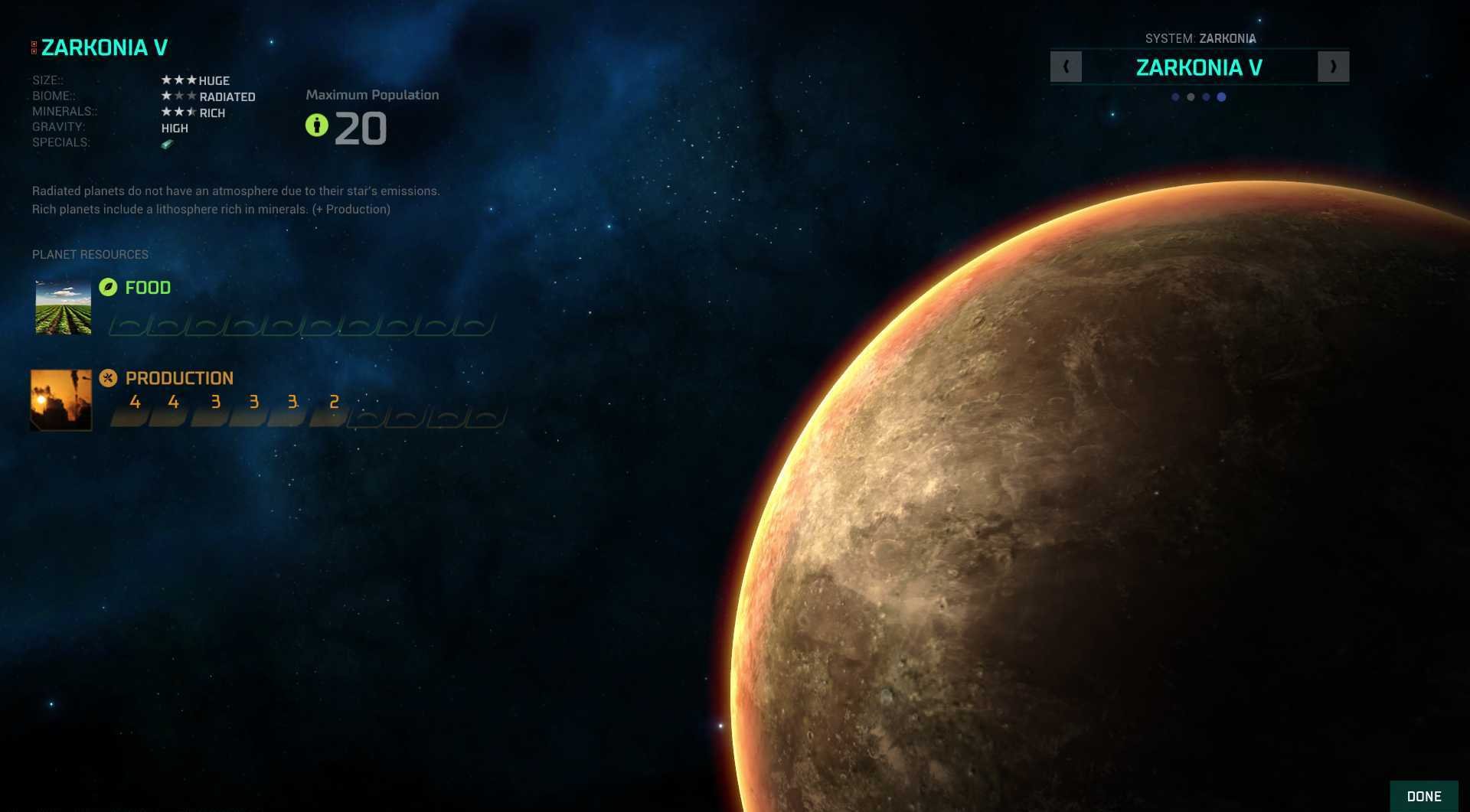Before setting up base make sure to read this handy guide, to find out which planets are the best (and worst) to colonize.
In your quest to conquer the stars, an intrepid explorer needs to know their galaxies and planetary systems so they can lay the foundations for greatness. We’re here to breakdown what types of planets you’ll discover in your journey.
The bigger the better, right?
There are a variety of planet sizes scattered around Master of Orion’s many galaxies. However, size isn’t everything, which you’ll discover later.
Huge: The biggest astrological bodies revolving around a star. An explorer won’t find any bigger or better out there. These should always capture your interest.
Giant: A gas giant is not able to be colonized until it has been terraformed, where it then will transform into a “huge” planet.
Large: Third in the list. It’s big. Not as big as Giant. Generally around the size of Earth.
Medium: Explorers should be getting the hang of this now.
Small: The smallest of the bunch, but that doesn’t mean they aren’t rich in resources.

Biome
Biome is, basically, the makeup of a planet—what’s there worth taking.
Gas Giant: Full of, you guessed it, gas.
Class A: “Gaia” -- the motherlode, El Dorado—rare worlds with extraordinarily rich ecosystems. These should always be your first port of call.
Class B: “Ocean” – planets whose surfaces are mostly covered with large bodies of water.
“Terran” – You’ll find abundant flora, fauna and water supplies here.
Class C: “Swamp” – Heavily layered with dense, jungle-like vegetation.
“Tundra” – frigid environments featuring permafrost and harsh weather.
Class D: “Arid” – Rocky terrain and sparse vegetation not to be confused with…
“Desert” – Harsh weather conditions and very little water are their most common features.
Class F: “Barren” -- Barren lands with a basic breathable atmosphere.
“Radiated” – They do not have atmosphere due to their star’s emissions.
“Toxic” – Totally inhospitable environments. Not a place you want to vacation.

Minerals
He who controls the minerals controls the universe. Harnessing the power of minerals allows explorers to increase production and kick their campaign into hyperspace.
Ultra Rich - Rare and overflowing with useful deposits (++Production)
Rich - they include a lithosphere rich in minerals (+ production)
Abundant – They have an average amount of valuable minerals
Poor – they have some mineral content, but not enough to make them really attractive (- Production)
Ultra Poor – very low density of heavy minerals (-- Production)

Keeping You Grounded
Another vital statistic to bear in mind before colonisation is the planet’s gravity. The gravity of a planet can be low, normal or high, with normal being preferable. This characteristic can result in your production being reduced by 50%, which no intrepid explorer wants.
Special Characteristics
The planets of Master of Orion can contain special resources which can help your progress during the fight to become Orion’s overlord. Keep an eye out for any of the following resources on the planets you find:
- Adamantium
- Silicon
- Xentronium
- Deuterium
- Helium
- Iridium
- Neutronium
- Zortrium
- Gold
- Artefacts
For example, Gold can affect your income for the better by giving you extra credits, while an artefact will boost the research for the colony.
During your explorations, you will notice that there will be asteroid fields - be wary though, these might be home to many a pirate, who is looking for any opportunity to loot you.
Hopefully this guide will help you on your way to becoming the greatest dictator Orion has ever seen.
Stay tuned for more installments to learn even more about Master of Orion!